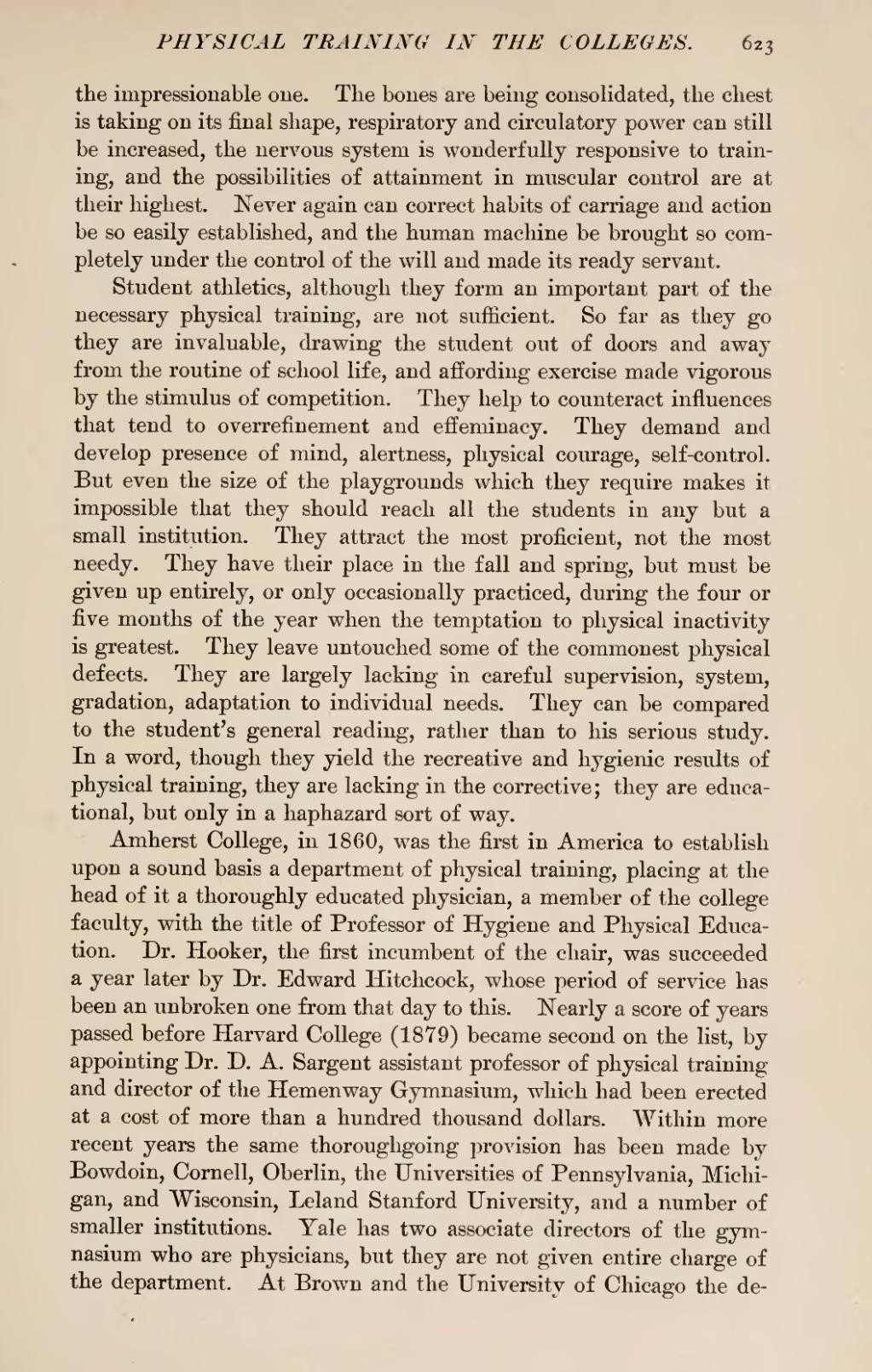the impressionable one. The bones are being consolidated, the chest is taking on its final shape, respiratory and circulatory power can still be increased, the nervous system is wonderfully responsive to training, and the possibilities of attainment in muscular control are at their highest. Never again can correct habits of carriage and action be so easily established, and the human machine be brought so completely under the control of the will and made its ready servant.
Student athletics, although they form an important part of the necessary physical training, are not sufficient. So far as they go they are invaluable, drawing the student out of doors and away from the routine of school life, and affording exercise made vigorous by the stimulus of competition. They help to counteract influences that tend to overrefinement and effeminacy. They demand and develop presence of mind, alertness, physical courage, self-control. But even the size of the playgrounds which they require makes it impossible that they should reach all the students in any but a small institution. They attract the most proficient, not the most needy. They have their place in the fall and spring, but must be given up entirely, or only occasionally practiced, during the four or five months of the year when the temptation to physical inactivity is greatest. They leave untouched some of the commonest physical defects. They are largely lacking in careful supervision, system, gradation, adaptation to individual needs. They can be compared to the student's general reading, rather than to his serious study. In a word, though they yield the recreative and hygienic results of physical training, they are lacking in the corrective; they are educational, but only in a haphazard sort of way.
Amherst College, in 1860, was the first in America to establish upon a sound basis a department of physical training, placing at the head of it a thoroughly educated physician, a member of the college faculty, with the title of Professor of Hygiene and Physical Education. Dr. Hooker, the first incumbent of the chair, was succeeded a year later by Dr. Edward Hitchcock, whose period of service has been an unbroken one from that day to this. Nearly a score of years passed before Harvard College (1879) became second on the list, by appointing Dr. D. A. Sargent assistant professor of physical training and director of the Hemenway Gymnasium, which had been erected at a cost of more than a hundred thousand dollars. Within more recent years the same thoroughgoing provision has been made by Bowdoin, Cornell, Oberlin, the Universities of Pennsylvania, Michigan, and "Wisconsin, Leland Stanford University, and a number of smaller institutions. Yale has two associate directors of the gymnasium who are physicians, but they are not given entire charge of the department. At Brown and the University of Chicago the de-

